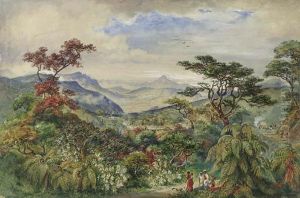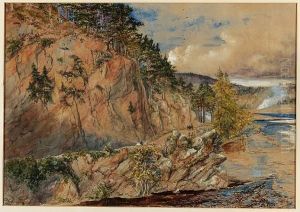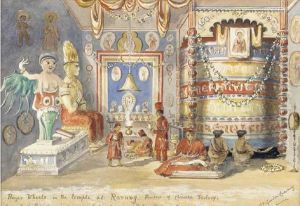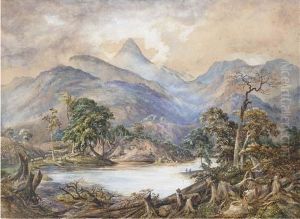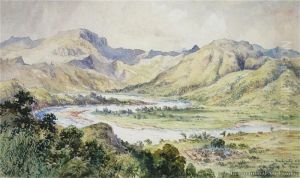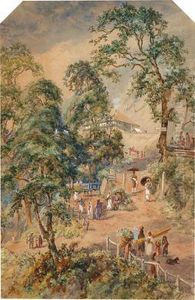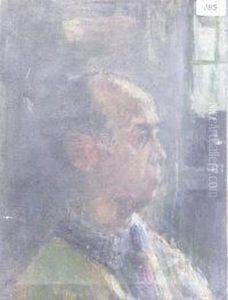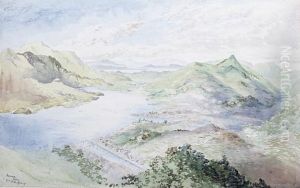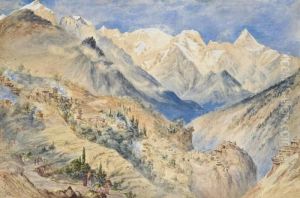Constance Fredericka Cumming Paintings
Constance Fredericka Gordon-Cumming, often known simply as Constance Cumming, was a British travel writer, painter, and illustrator, born in Altyre, Moray, Scotland in 1837. She was one of the twelve children of Sir William Gordon-Cumming, 2nd Baronet, and his wife, Elizabeth Maria (née Campbell) Cumming. Raised in a family with military and aristocratic ties, she had the privilege of education and travel, which later greatly influenced her work as an artist and writer.
Cumming exhibited a keen interest in art and travel from an early age. She was largely self-taught as an artist, developing her own style and technique. In the 1870s, she began to travel extensively, visiting various parts of the British Empire and beyond, including destinations such as India, China, Fiji, and California. Her travels were the basis for her work, as she meticulously recorded landscapes, cultures, and experiences through her paintings and writings.
As a prolific travel writer, Cumming published several books that documented her journeys, including 'From the Hebrides to the Himalayas' (1876) and 'In the Himalayas and on the Indian Plains' (1884). These works were well-received for their vivid descriptions and the accompanying illustrations, many of which were her own watercolors. Her writings provided unique insights into the places she visited, particularly at a time when such travels were relatively rare, especially for women.
Cumming's paintings were also widely appreciated during her lifetime. She often used watercolor, a medium that allowed her to capture the ephemeral qualities of the scenes she witnessed. Her works were exhibited at various institutions, including the Royal Scottish Academy. Despite her extensive travels and the exotic locations she depicted, Cumming's style remained distinctly British, reflecting the artistic trends and traditions of her homeland.
In addition to her travel writing and paintings, Cumming was known for her advocacy of leper colonies, particularly in the Pacific. She spent several years in Fiji, where she not only painted and wrote but also worked to improve the conditions of those affected by leprosy. Her book 'At Home in Fiji' (1881), for instance, provides an account of her experiences there.
Constance Cumming continued to write and paint until her later years, leaving behind a legacy that captured a unique perspective of the world during the height of the British Empire. She passed away in 1929, having made significant contributions to both the literary and art worlds through her extensive body of work.
